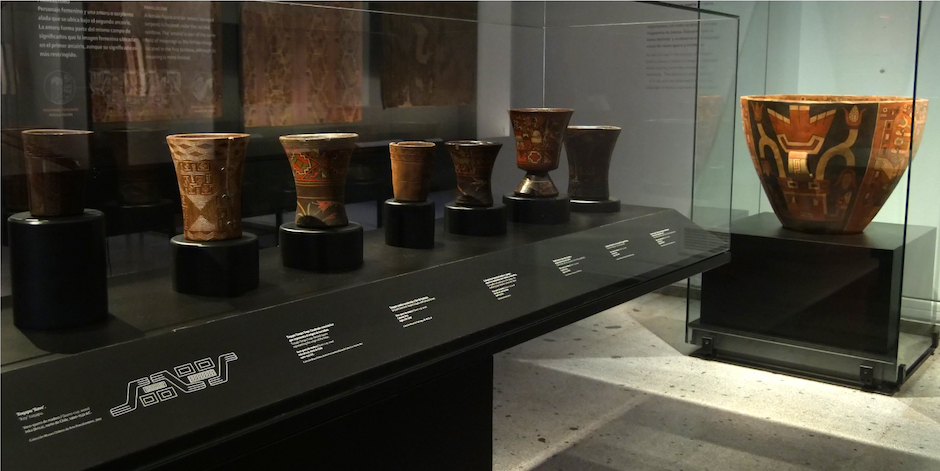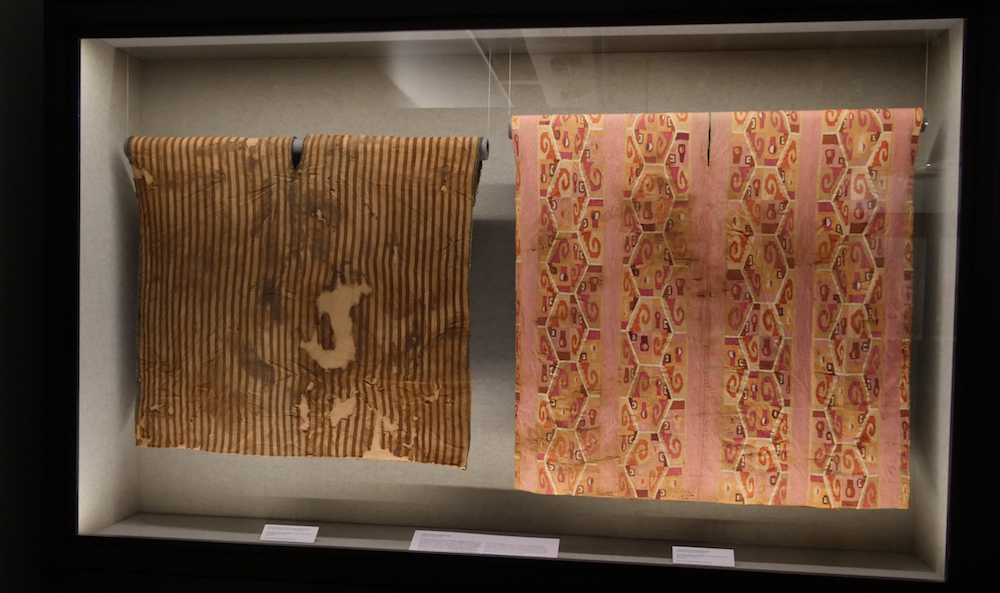
To the left, textile tunic with 'allqa' vertical bands showing chromatic opposition. Inka-Altiplánico, norte de Chile, AD 1400-1532. Colección Museo Chileno de Arte Precolombino, TE-302; to the right, textile unku-tunic, with abstract and geometric languages. Wari, central coast of Peru, AD 700-950. Colección Museo Chileno de Arte Precolombino, 0947.
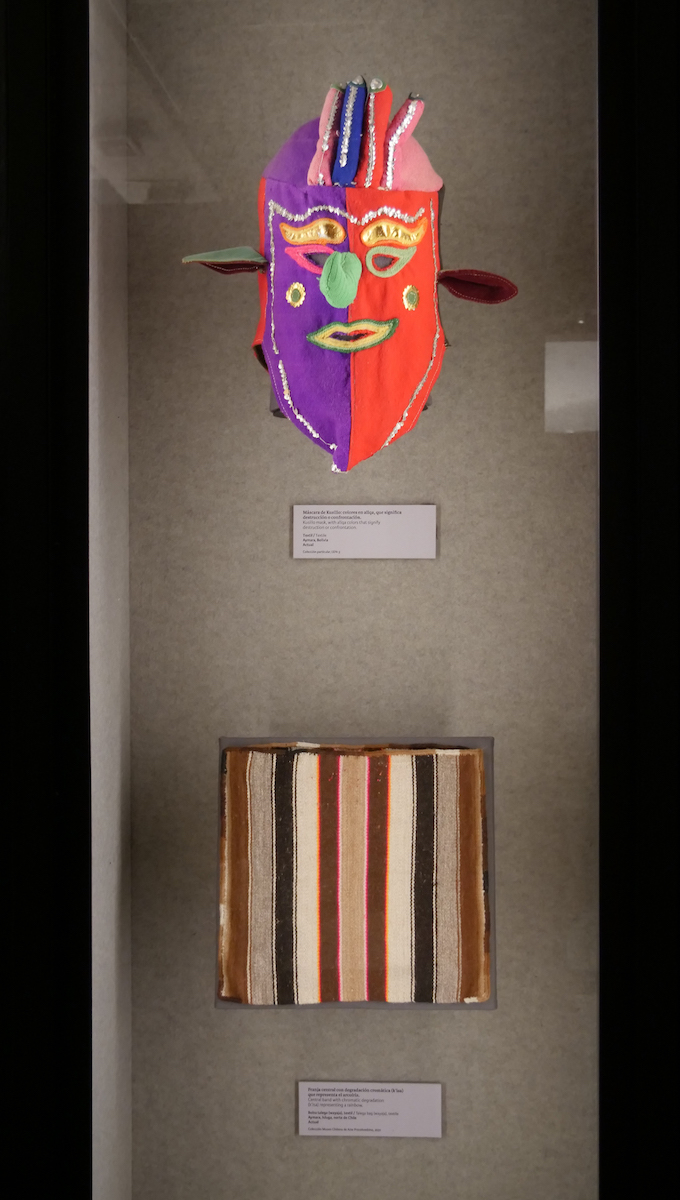
Other languages: 'allqa' and 'k'isa' in textiles.
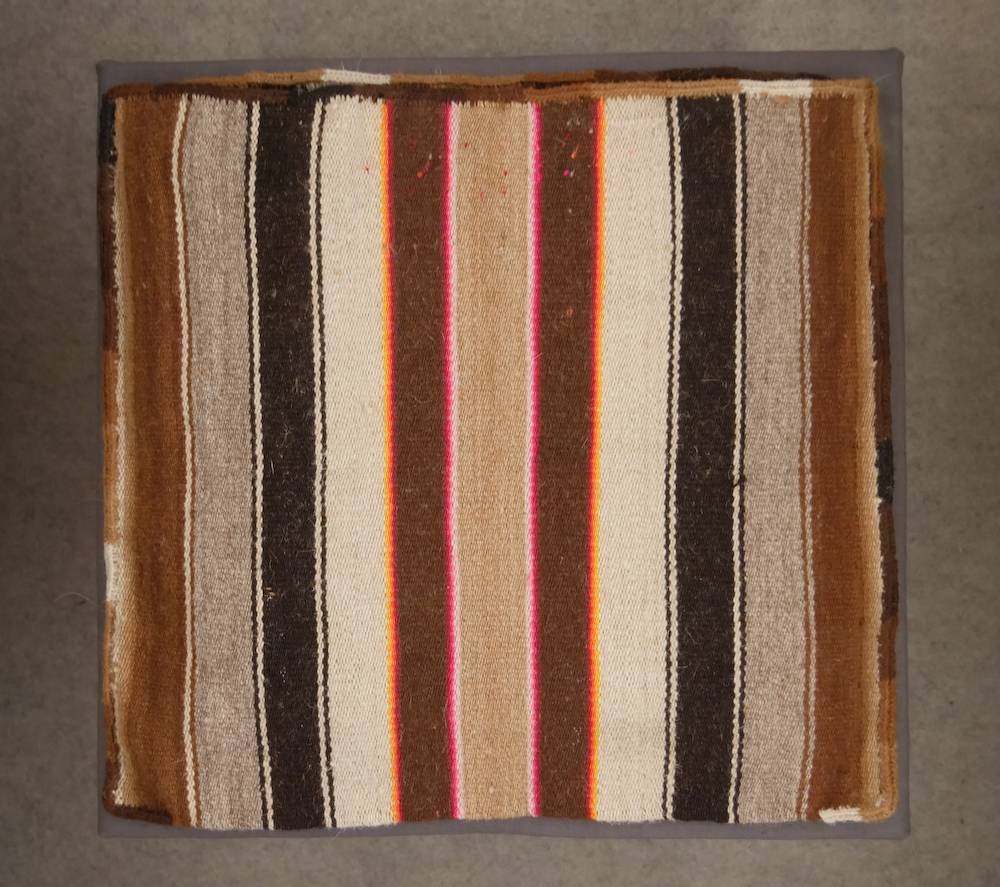
Central band with chromatic degradation (k´isa) representing a rainbow, in a textile bag. AYmara, Isluga, north of Chile. Colección Museo Chileno de Arte Precolombino, 2031.

Kusillo dancing mask, with allqa colors that signify destruction or confrontation. Textile, Aymara, Bolivia. Colección particular, LEN-3.
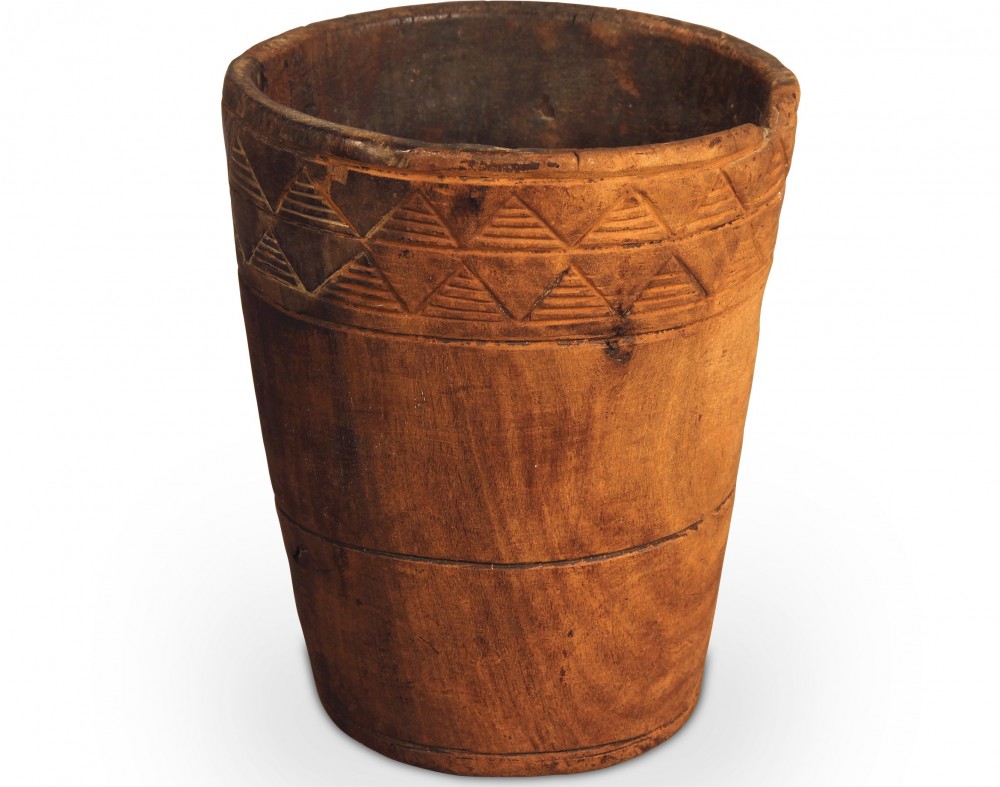
Design in horizontal bands. The middle band is the pampa, the mediating space between culture and nature., in a quero-cup. Wood. Ina (Arica), north of Chile, AD 1400-1532. Colección particular LEN-4.
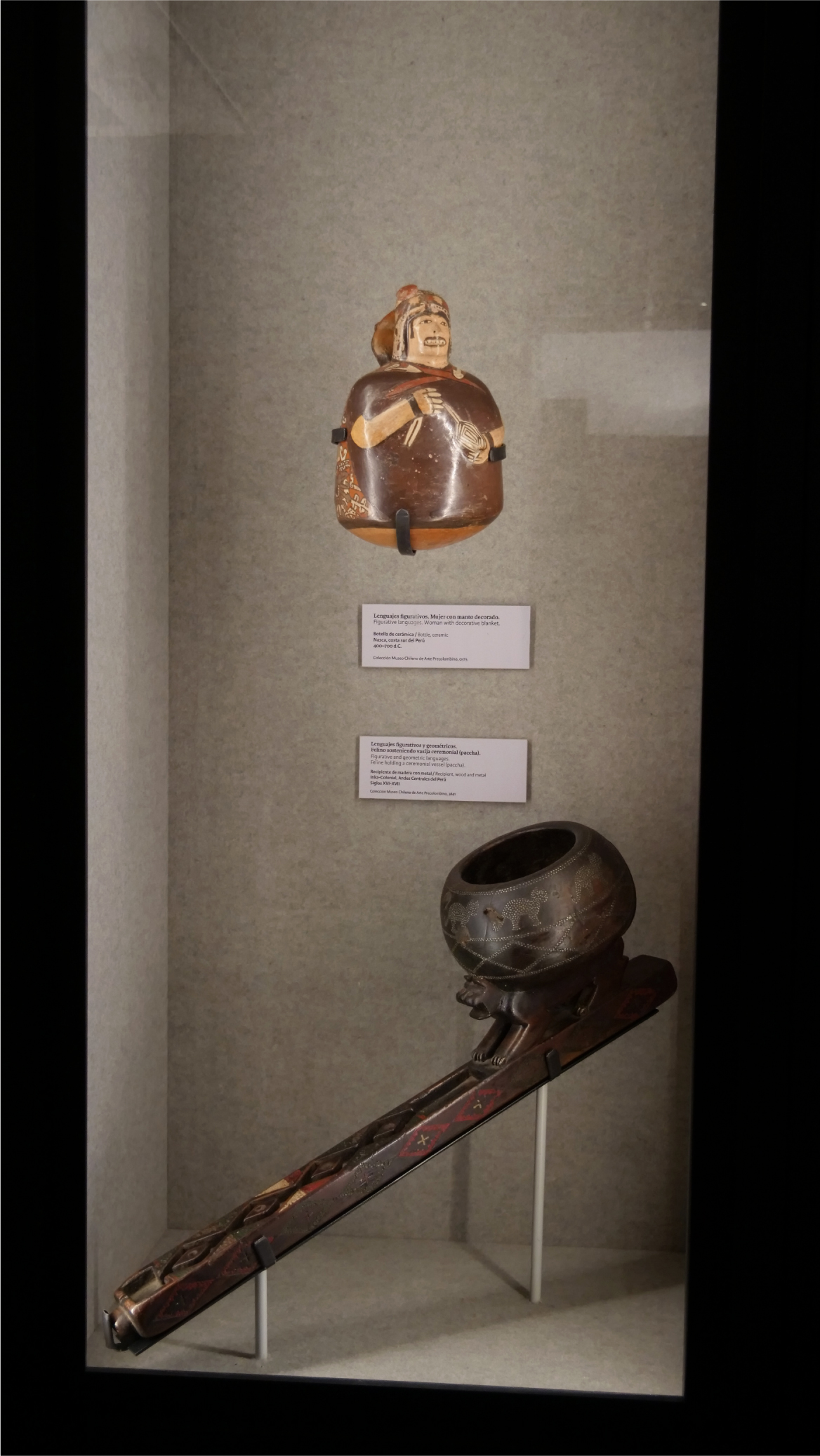
Figurative and geomtric languages in a Nasca ceramic bottle and in a ceremonial vessel (paccha) from Inka-Colonial time. Colección Museo Chileno de Arte Precolombino, 0315 and 3841, respectiveley.
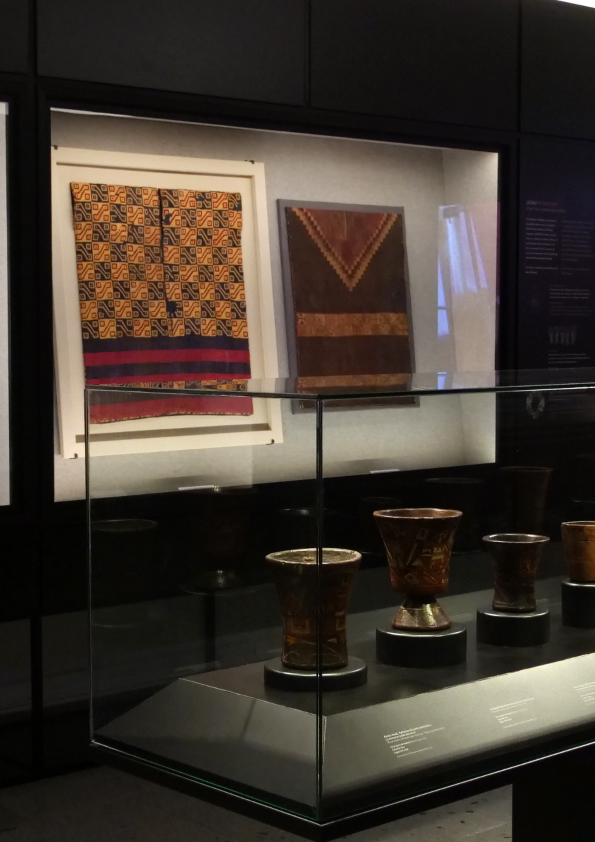
Textile tunics with 'toqapu' designs.
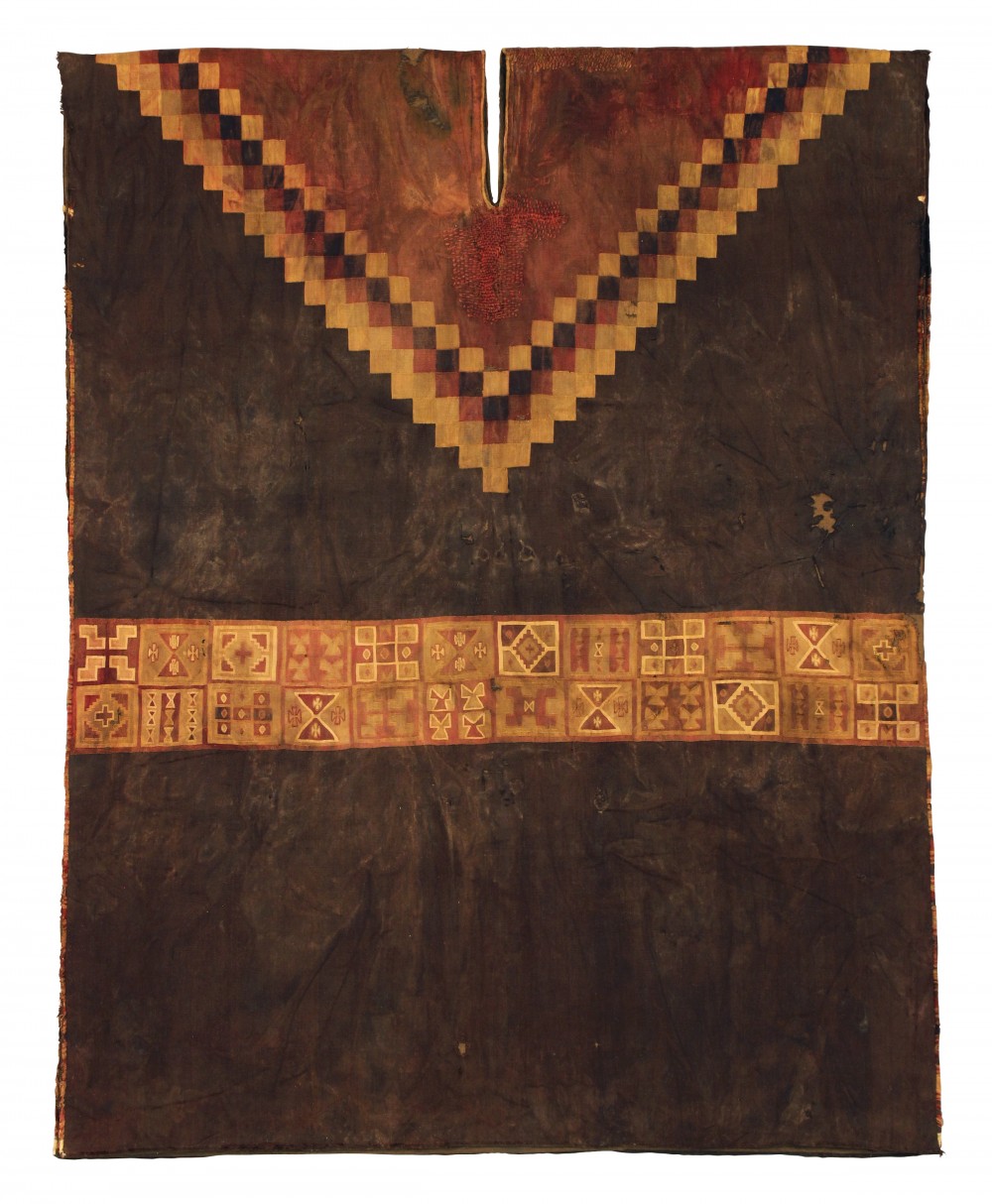
Textile unku-tunic with a decorated band with several kinds of 'toqapus'. Inka Empire or Early Colonial, Central Andes of Peru, Siglos XV-XVI. Colección particular, PE-FS02.
These languages are constructed with linear forms such as bands, squares, rectangles, or crosses. Among other things, these forms represent the relationships between light/darkness, union/opposition, up/and down, duality/four-partedness, as well as symbolic content like toqapus. The textile tunic on the left side of the image displays allqa, bands of natural colors in high optical contrast. The tunic on the right, instead, has abstract designs bands, but there are figurative motifs mixed in among them.
Other abstract languages include k´isa—fine stripes of non-natural (dyed) colors in diminishing tonal intensity that articulate the relationship between light and darkness and the pampa—an open space in a uniform color, free of designs. Both languages are usually represented on textiles and quero-cups.












































